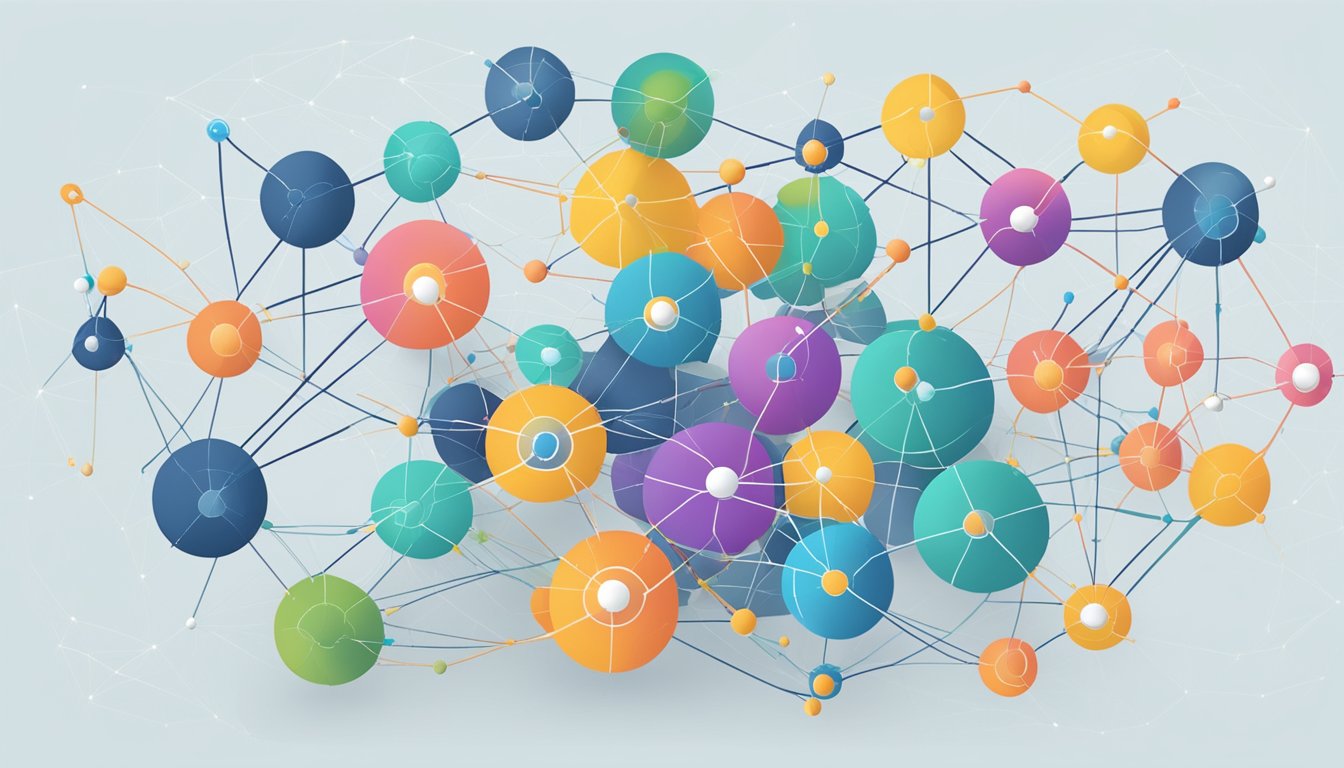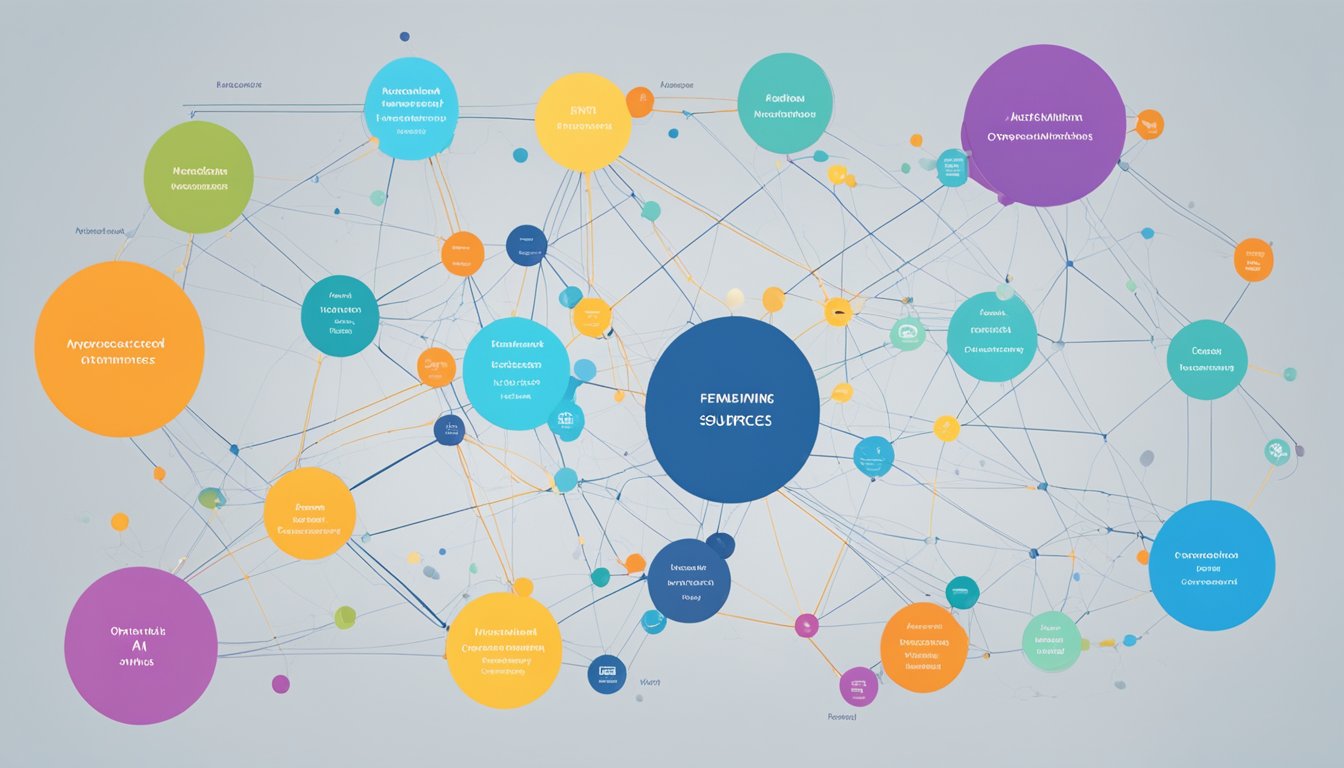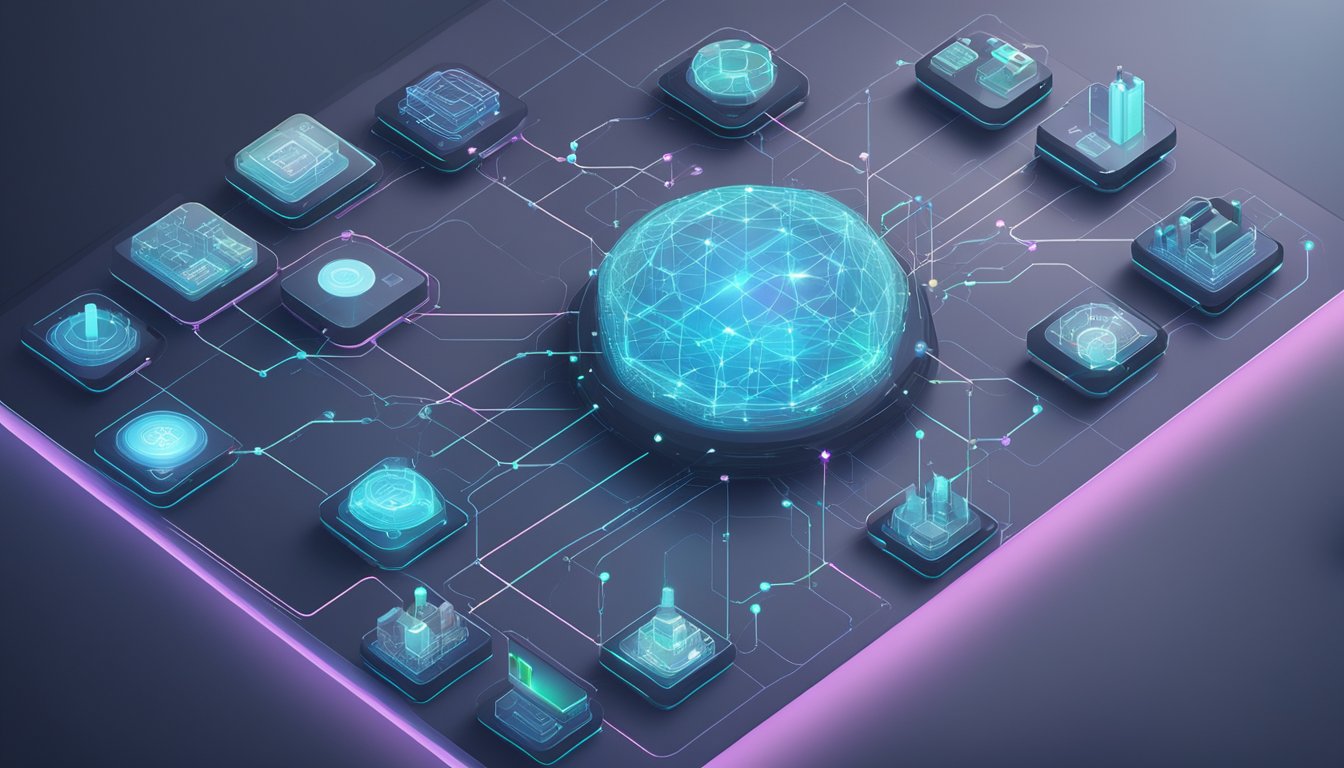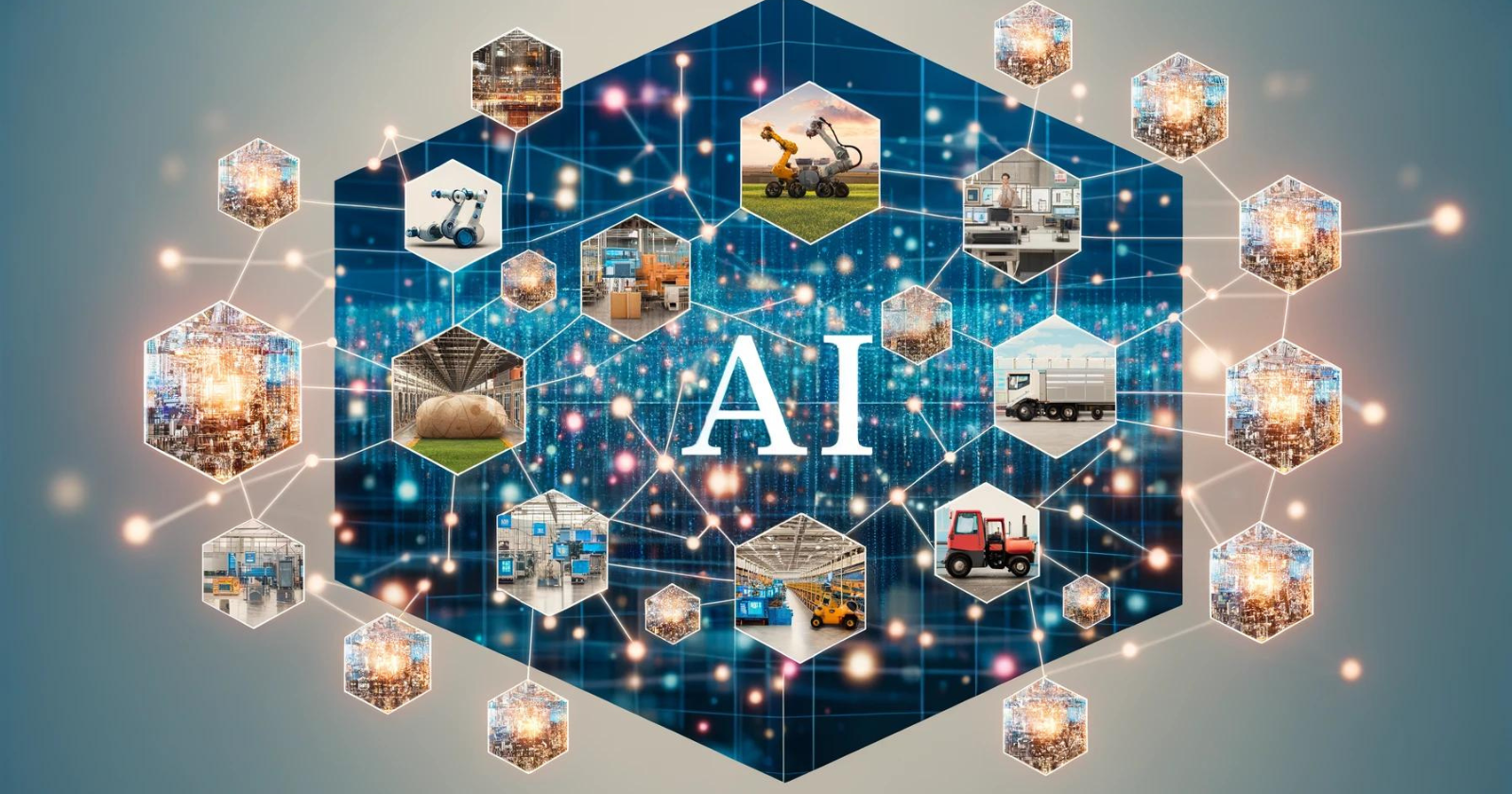AI and Operational Models: Enhancing Efficiency Across Industries
Ever wondered how artificial intelligence (AI) is revolutionizing the way businesses operate? Think of AI as your business’s tech-savvy friend who’s always ready to lend a hand to make things more efficient. From streamlining complex operations to predicting market trends, AI is like the Swiss Army knife in the digital transformation toolkit. It’s reshaping operational models, making them smarter and more responsive. So, how exactly is this happening?

AI-powered operational models are your behind-the-scenes maestros, orchestrating business processes with a level of precision and insight that’s simply not possible with traditional methods. You’ve probably heard about companies undergoing digital transformation, right? Well, integrating AI into their operations is a huge part of that. It’s all about harnessing data and advanced analytics to make better decisions and optimize every aspect of performance. This isn’t just a futuristic fantasy—it’s happening right now, and it’s pretty exciting, isn’t it?
Taking the leap into AI-enhanced operations might sound daunting, but it’s about building that competitive edge. Imagine having the ability to anticipate customer needs or preemptively addressing operational bottlenecks before they even occur. That’s the power of AI at work. It turns heaps of data into actionable insights, essentially becoming the co-pilot in piloting your business towards success. Ready to see how it all unfolds? Let’s dive into the transformative world of AI and operational models!
Foundations of AI in Business
When you think about the integration of AI in the business world, envision a growing landscape where machines learn from data and deliver insights that humans can use to make better decisions and innovate faster.
Evolution of AI
Have you ever wondered how we got to this point with AI in business? It’s been quite the journey! From basic machine learning algorithms to sophisticated deep learning networks, AI has rapidly evolved. Businesses have moved from using AI for simple task automation to leveraging it to gain strategic insights. For example, Gartner often discusses AI’s transformative eclectorate on industries worldwide.
AI and Digital Transformation
Digital transformation isn’t just a fancy buzzword; it’s the reimagining of business in the digital age. And guess what? AI is right at the heart of it. AI technologies such as digital twins are creating virtual replicas of physical devices that can be used for simulation and analysis. Imagine having a crystal ball to predict the future performance of your products; that’s the kind of advantage we’re talking about here!
Key AI Technologies
Let’s get down to the nitty-gritty of the technologies pumping the AI heart. We’re seeing a universe of AI technologies from natural language processing (NLP) to robotic process automation (RPA) making waves in the business ocean. Each AI technology plays its part, turning data into gold and providing a competitive edge. The business value of these technologies comes from their ability to interpret the vast amounts of data businesses collect every single day, transforming them into actionable strategies.
Operational Models and AI Integration
In merging artificial intelligence with your business, how you structure operations is key. Traditional organization structures might not cut it, so let’s look at how operational models evolve when AI steps in.
Defining Operational Models
What’s the big deal about operational models? They’re like the playbook for your business’s daily activities. Think of them as a detailed guide of who does what, when, and how. Sounds straightforward enough, right?
AI-Driven Business Models
Okay, here’s where things get spicy! AI has the power to transform good ol’ business models into trailblazing, high-performing engines. Imagine having a personal assistant that learns and adapts, helping you make smarter decisions, faster. That’s AI for you. By operationalizing AI, companies are witnessing not just incremental, but transformative changes, pushing them to the forefront of innovation.
Organizational Alignment with AI
So you’ve got this shiny new AI tech, but is your team on board? For AI to work its magic, everyone from the top down needs to align with this new co-worker. The operating models need a makeover, ensuring they provide a solid framework for AI integration. It’s not just about using AI; it’s about reshaping the very fabric of your organization to dance to the rhythm of automation and machine learning.
Remember, your success with AI depends as much on the technology as it does on the people and processes behind it. Keep it friendly, keep it smart, and watch AI transform your operational models from the inside out.
AI Implementation and Use Cases

Exploring how AI is transforming the landscape, you’ll find it’s all about tailored solutions that streamline operations across various sectors. Ready to see how it unfolds in your industry?
Role of AI in Different Industries
Did you know that AI is a bit of a chameleon, adapting to the colors of different industries? From healthcare’s predictive diagnostics to finance’s fraud detection, AI is there. In retail, AI gathers data to personalize shopping experiences, while in manufacturing, it’s keeping an eye on supply chains, ensuring everything ticks like clockwork.
AI for Efficiency and Automation
Think of AI as your productivity superhero. By automating mundane tasks, it gifts employees the time to focus on complex, value-driven work. For instance, chatbots tirelessly handle customer queries, and in analytics, AI tools swiftly turn data into insights. As efficiency skyrockets, so does your business’s potential. A systematic literature review talks about the Input-Process-Output model, which perfectly encapsulates how AI infuses efficiency into every corner of an organization.
AI and Customer Experience
Ever felt like a business just gets you? That’s AI working its magic. By analyzing customer data, AI anticipates needs, delivering spot-on recommendations and support, revolutionizing the customer journey. Imagine, AI even fine-tunes product designs to align with evolving preferences. It’s the small, personalized touches that make customers feel truly valued.
Data Management and Analytics

Ever wondered how to make the most of your data? You’re in the right place! This section dives into the essentials of Data Management and Analytics, focusing on the critical elements that can turn raw data into actionable insights.
Importance of Quality Data
You know what they say, “garbage in, garbage out.” Quality data is the lifeblood of effective analytics. If your data is full of errors, your insights could be misleading. That’s where machine learning comes in handy. By using algorithms to clean and verify data, you ensure that your analytics tools work with the best possible information, leading to accuracy in your insights.
- Predictive analytics is only as good as the data you feed it.
- Anomaly detection starts with spotting deviations from your quality norms.
Analytics and Decision Making
Now, let’s talk about turning that pristine data into decisions. Analytics is the compass that guides your business strategy, and machine learning models are the powerhouse behind the curtain. Predictive analytics can forecast trends and behavior, giving you a sneak peek into the future and allowing you to make informed decisions before your competitors even spot the curve.
- Use analytics to back every decision, from marketing campaigns to supply chain adjustments.
- Advanced machine learning models can reveal patterns hidden deep within your data.
Monitoring and Alerts
Ever wish you had a vigilant guard dog for your data? That’s what monitoring and alerts are all about. They keep an eye on your operations 24/7, ready to bark—err, I mean, alert you—at the first sign of trouble. This real-time feedback loop is essential for keeping things on track and catching those pesky anomalies before they become full-blown issues.
- Set up alerts to nudge you when something’s amiss.
- Regular monitoring ensures you’re always in the know and ready to act.
With these tools and approaches, your data isn’t just numbers in a spreadsheet. It’s a beacon, illuminating the path for your business strategies. So, make sure you’ve got your data ducks in a row and let analytics lead the way to better decisions and smarter operations.
AI Platforms and Engineering Tools

Choosing the right tools and platforms can feel like trying to find a needle in a haystack, right? But don’t worry, you’re about to discover how to sift through the options to find that shiny needle that will sew up your AI aspirations into reality.
Selecting the Right AI Platform
What’s on your checklist when you’re trying to find an AI platform? It should be like finding the perfect pair of shoes: they’ve got to be supportive, snug, and ready to go the distance with you. Whether it’s a comprehensive software solution offering a range of tools or a specialized platform focused on your niche, you need to ensure it clicks with your project requirements. Content, context, and capacity are your cornerstones here. For instance, platforms like Verta offer end-to-end models and lifecycle management you may find indispensable.
Building vs Buying AI Solutions
So, you’re at a fork in the road: to build or to buy? Crafting your own AI solution comes with bragging rights, but it can be as time-consuming as binge-watching a TV series. On the hand, buying may drop a ready-to-use tool in your lap, but it could fit like a square peg in a round hole. If you’re considering an out-of-the-box AI solution, remember it’s about finding the right fit for your team’s skills and your project’s scale.
MLOps and DevOps Integration
Ever wonder if MLOps and DevOps could be best pals? They’re like the dynamic duo of operational efficiency, working together to ensure that your AI systems are as smooth as a jazz ensemble. The rhythm of continuous integration and deployment that DevOps brings dances in tune with the precision and model monitoring MLOps offers, striking a harmonious balance in your workflow. Integration means your AI model isn’t just smart; it’s also savvy, staying in step with your software developments.
AI Governance and Ethics

In the world of AI, playing by the rules isn’t just a good idea; it’s a must. Think of AI governance as the referee that makes sure the game is fair, and ethics as the playbook ensuring the game is played with integrity. Now, let’s dive in and see how these concepts shape our AI-powered future, shall we?
Developing AI Policies
Ever wonder who’s making the rules for AI? Well, that’s where AI policies come into play. Crafting these policies involves a thoughtful balance of innovative freedom and risk management. For instance, the World Health Organization emphasizes the importance of governance for large multi-modal models in healthcare, walking the tightrope between advancement and ethics.
- Key Policy Areas:
- Use Cases: What AI should and shouldn’t do.
- Risk Assessment: Pinpointing what could go wrong.
- Standards of Conduct: How AI should act in the real world.
Privacy, Transparency, and Oversight
Imagine AI use without a shred of secrecy—sounds dreamy, right? Privacy is the cornerstone here, ensuring your data isn’t spilling the beans without your consent. Transparency means no more guessing games about how AI makes decisions. With good oversight, we avoid the dreaded “AI gone wild” scenario. Let’s put it into context with KPMG’s framework on AI robustness and compliance that highlights how resilience is key in fortifying AI against bad actors.
- Critical Considerations:
- Data Protection Policies: Keeping personal info under wraps.
- Open Communication: AI needs to show its work.
- Checks and Balances: Regularly reviewing AI systems to keep them in line.
Responsible AI and Regulation
Ever think about AI that not only plays by the rules but also makes the world a bit better? That’s responsible AI. Staying responsible means creating AI that’s ethical and equitable. Regulations aren’t just red tape; they’re the guidelines that keep AI fair for everyone. For a deep dive into ethical AI creation, Harvard Business Review offers some practical tips on building a data and AI ethical risk framework.
- Regulation Musts:
- Ethical Principles: Setting the moral compass for AI.
- Legal Compliance: Ensuring AI doesn’t step out of legal bounds.
- Social Impact: Gauging how AI affects real lives.
So, you see, AI Governance and Ethics isn’t just about keeping the bots in line; it’s about ensuring that the future we’re building is secure, fair, and beneficial for all. Remember, a little governance goes a long way, and ethical practices make sure AI is a team player in the society of tomorrow. Buckle up; it’s going to be an exciting ride!
AI and Workforce Transformation
Ever wondered how AI is transforming the way we work? Let’s dive right in and unpack the effects of AI on jobs and the crucial skills you’ll need to thrive.
AI Impact on Jobs and Skills
AI is reshaping the landscape of employment, with some roles becoming automated and new ones emerging. Have you heard that automation is not only about replacing tasks but also creating new opportunities? That’s right, your job might evolve, but it certainly doesn’t mean it’s disappearing. You’ll find that the demand for digital skills is skyrocketing, so polishing up on your tech know-how could be a game-changer.
Building AI Competencies
Building your skill set for an AI-driven world doesn’t have to be daunting. Here’s the scoop: you need to understand which skills are in demand and then match them with appropriate training. Looking to add some AI flair to your talent arsenal? Consider developing skills like managing AI tools—it’s a smart move that can set you apart in the job market. Also, keep an eye out for quality training data; it’s the bread and butter of effective AI.
- Identify in-demand AI skills
- Match skills with training programs
- Emphasize the importance of training data
Fostering Collaboration and Mindset Change
Adopting AI isn’t just about getting techy; it’s a team sport! Wondering how to get ahead of the curve? Start by fostering a collaborative environment where everyone is on board with the AI transformation. Success in AI hinges on a collaborative mindset—it’s all about combining forces across various departments. Remember, switching to an AI-friendly workflow is not just a solo journey; it’s about bringing everyone along for the ride.
- Encourage open communication
- Build cross-departmental teams
- Strengthen collaborative efforts
By keeping an open mind and actively seeking collaboration, you’ll be leading the charge in the AI revolution. Remember, each step you take to build your AI competencies and adapt to new ways of working is a step towards a brighter, more efficient workplace. Let’s get excited about the possibilities, shall we?
The Future of AI in Business
The landscape of business is undergoing a monumental transformation, and you’re at the forefront of this change. Artificial Intelligence (AI), with its impressive capabilities, is shaping a new era of operational models that are poised to redefine efficiency and innovation.
Emerging AI Trends
Hey, have you noticed how AI is everywhere these days? From generative AI creating art to large language models like GPT-4 chatting up a storm, the potential is huge! But it’s not just for fun – these technologies are becoming the backbone of modern business strategies. Let me drop some knowledge on you:
- Natural Language Processing (NLP): Companies are leveraging NLP to enhance customer service and create more intuitive user experiences.
- Automation and Efficiency: Across industries, mundane tasks are getting automated, freeing up your valuable time for more complex problems. Believe it or not, this is a game-changer!
AI for Competitive Advantage
So, you’re eyeing that edge over your competitors, right? AI is your secret weapon! It’s all about using smart algorithms for smarter business, optimizing every operation to leapfrog ahead. Here’s how you can make AI work for you:
- Personalization: Customizing experiences like a bespoke suit, making customers feel special and seen.
- Data-Driven Decisions: Crunch numbers like a boss and spot trends before they’re trending.
By embracing AI, you’re not just keeping up; you’re setting the pace.
Preparing for AI-Driven Future
Ready or not, the AI revolution is here, and it’s time to gear up for an exciting journey. Think of preparing for this AI-driven future like training for a marathon – you’ll need endurance, strategy, and the right gear to cross the finish line. Consider these steps:
- Invest in Training: Get comfy with AI. The future belongs to those who understand its language.
- Adopt a Data Mindset: Start seeing data as your most loyal ally. It’s the fuel for your AI engines.
Remember, the road to AI is like a box of chocolates, you never know what you’re gonna get – but with the right tools, you’re in for a treat!
Frequently Asked Questions
Navigating through the complexities of AI can be daunting, can’t it? But don’t worry, you’re about to get clear, concise answers to some of the most pressing FAQs in the world of AI and operational models.
How is Artificial Intelligence revolutionizing traditional business operating models?
Artificial Intelligence is shaking things up by injecting efficiency and automation into processes that were previously manual and time-consuming. For instance, AI models are altering decision-making processes, enhancing customer experiences, and allowing for real-time data analysis—turning sluggish workflows into sleek streams of productivity.
Can you give some real-world examples of AI integration within operational systems?
Certainly! Take the healthcare industry, for instance. AI is used for predictive analytics in patient care, improving diagnoses and treatment plans. Retailers have embraced AI for inventory management, ensuring shelves are stocked based on predictive consumer behavior—smart, right?
What are the key differences between AI models and machine learning models in business operations?
Here’s the scoop: AI models encompass a wide range of technologies capable of mimicking human abilities, while machine learning models are a subset of AI focused on using algorithms to parse data, learn from it, and make predictions. Machine learning is more about data and pattern recognition, whereas AI is about simulating human intelligence across the board.
In what ways does digital transformation leverage AI to enhance a company’s operating model?
Digital transformation and AI go together like cookies and milk. Businesses are using AI to streamline operations, reduce costs, and even fuel growth. By leveraging AI in their digital transformations, companies can benefit from advanced analytics and insights, making strategic moves that were previously unthinkable.
What strategies are companies adopting to ensure the successful operationalization of AI?
To execute their AI strategies, companies are setting up dedicated teams, adopting robust AI governance frameworks, and ensuring that AI systems are transparent and explainable. Strategies include staggering the rollout of AI technologies, ensuring cross-functional collaboration, and maintaining strong data governance policies.
Looking ahead, what does the future hold for AI deployment in global operating models?
The future’s looking bright and brainy! AI deployment is expected to become more pervasive, with predictive insights becoming integral to operations across all sectors. We’re talking about smart supply chains, dynamic pricing models, and personalized customer service—AI’s going to be the hotshot helping businesses stay agile in a rapidly changing world.








